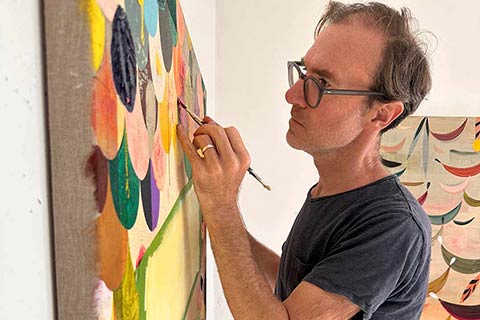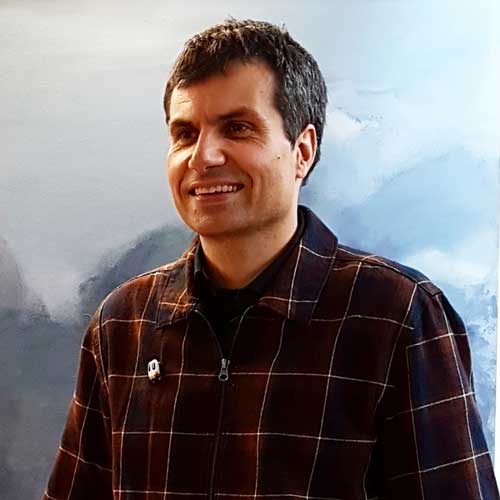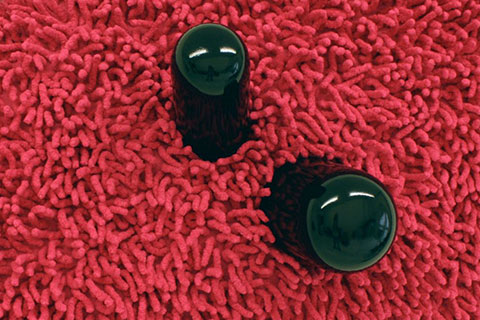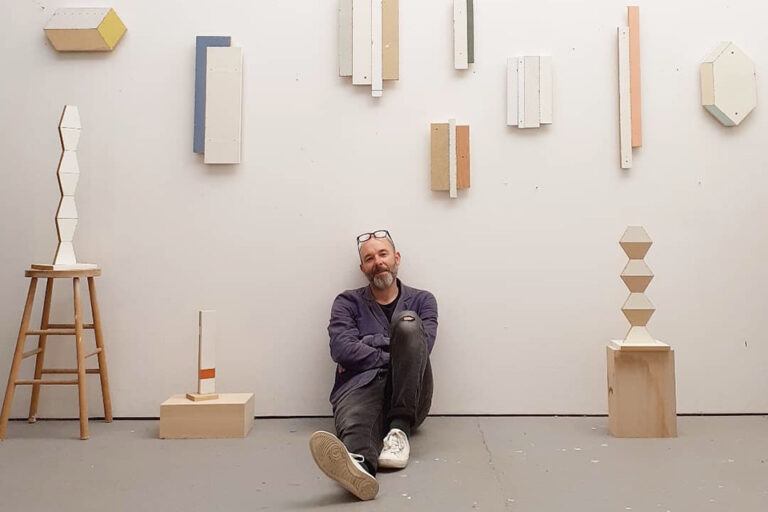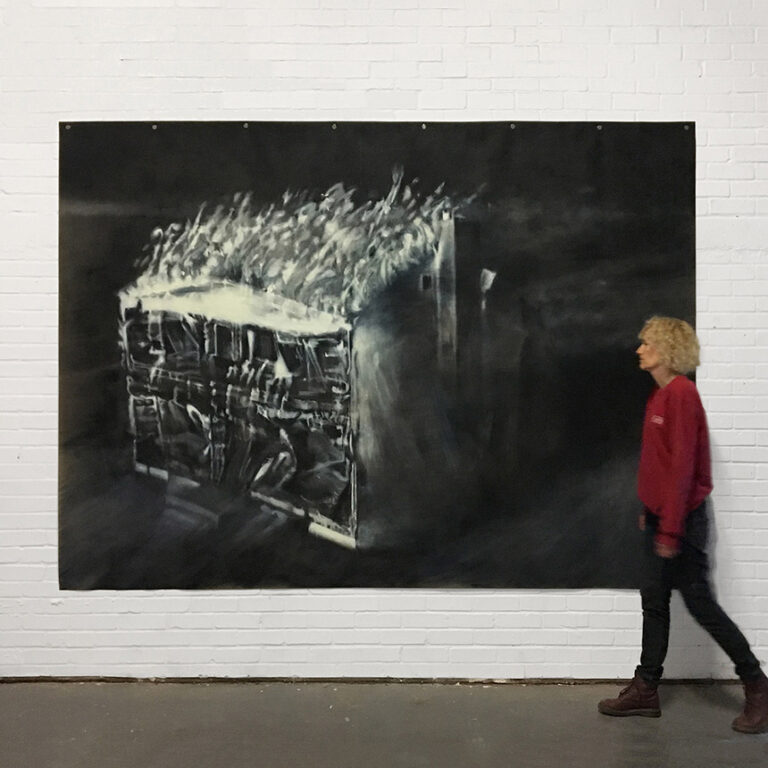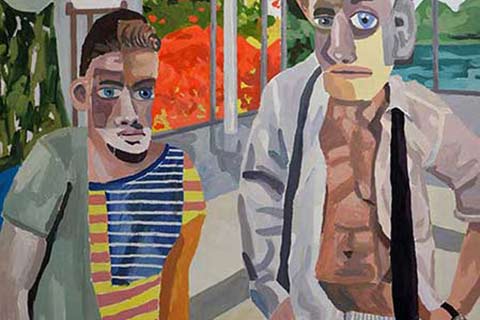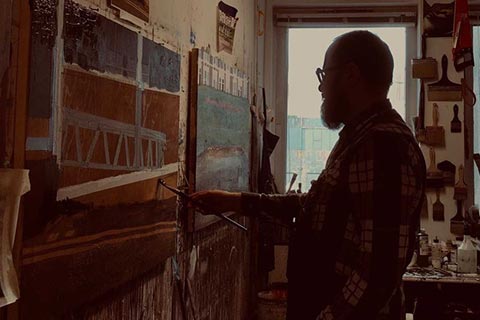Julian Brown: Artist of the Month
Artist of the Month April 2024:
Julian Brown, selected and interviewed by Paul Newman for CBP.
Julian Brown is an artist who creates visual kaleidoscopes in an array of colourful patterns, grids and curves. His playful, folk art inspired work draws upon his childhood visions with a poignant awareness of his Polish heritage and a particular love for the wonder of the paper cut-out craft of Wycinakni, introduced to him by his mother… Brown indicates that this work is also about the relationship of colour and breaking down systems where he might teeter on the edge of success or failure… Much like the imaginations of a childhood game, the work has many possibilities and could lead to any number of endings.
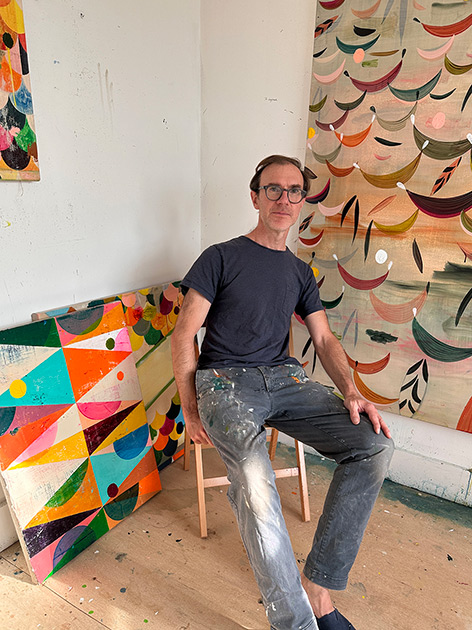
CBP: Your paintings are very playful with a sense of rhythm, spontaneity, and structure, with reoccurring shapes and motifs that evolve over time. They utilise colour and translucency to create space through the history of their layers. Could you introduce broadly your approach to painting?
JB: I like to begin with a system, with practice and memory the implementation of this system turns into a rhythm and this rhythm turns into spontaneity. The colour is applied to a similar set of rules, starting with translucent washes then building and removing the paint. The process becomes more intuitive the more I become involved in the painting, often mixing the palette directly on to the canvas. I like the works to be as alive as possible, to include all the mistakes and the history of the process. I’m interested in pushing the process as far as I can, the tensions between order and chaos, structure and collapse and the moment where things start to fall apart.
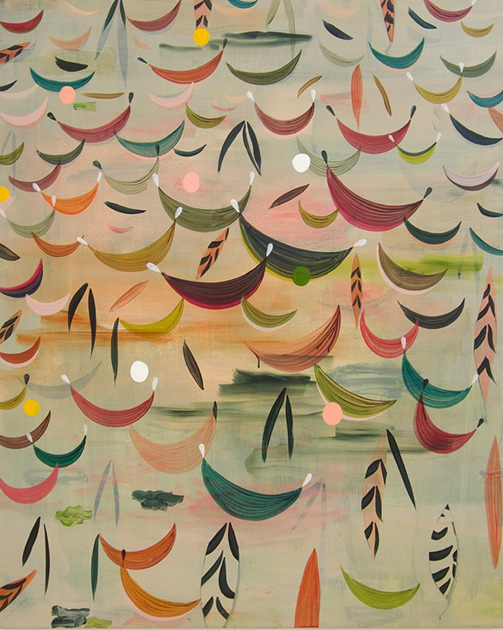
CBP: Structure and spontaneity appear to go hand in hand in your work. Is there an underlying scaffolding you use for the construction of your work, like some form of grid, even if it’s not a literal one?
JB: I often start with a grid as it helps underpin my expressive approach to the paintings. When it’s not there, like in some of my recent lagoon paintings I think I’m subconsciously trying to paint one back in with a series of motifs and repetitions. You can sometimes still see the pencil marks of the grid still visible, this is intentional because I want these paintings to retain a sense of history and document the decision making process.
The grids also allows accidents into the paintings, I want to create systems where chance is possible, this is what drives the paintings and informs future works.
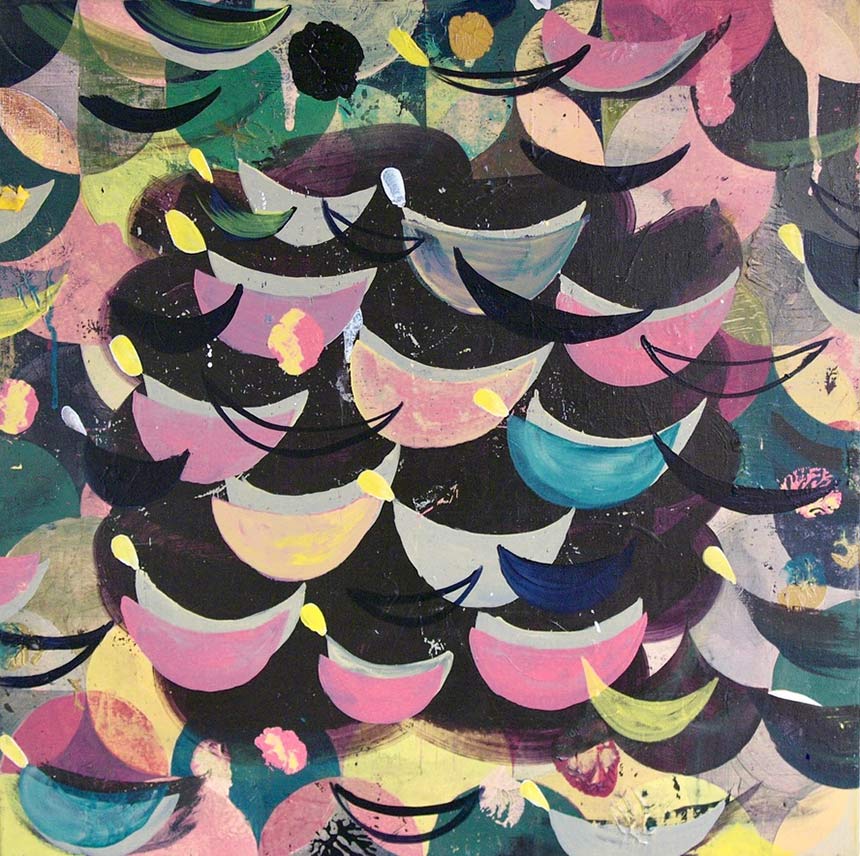
CBP: Can you talk about the shapes and motifs that have developed in your work, from the small circles, the triangles, and crescent shapes.
JB: Everything that happens in a painting is a result of what’s happened in previous paintings. So the crescent shapes are a development of simple gestural sweeps of the brush. But as these forms evolve, they start to take on their own significance and create their own language setting off thoughts, sensations that unlock the subconscious.
I can vividly remember making a painting (Fairly Tale of Gdańsk) where something was happening on the canvas, my mind meandered back to a scene from my childhood home of a humble landscape painting made by my mother shortly after she fled Poland around the time of the Warsaw uprising.
I remember observing the painting like a love letter to her past. Etched into the landscape was a world of folklore and tradition. Elements that happened in that painting, the compositions of floating boats, trees and crescent moons still resonate in my work.
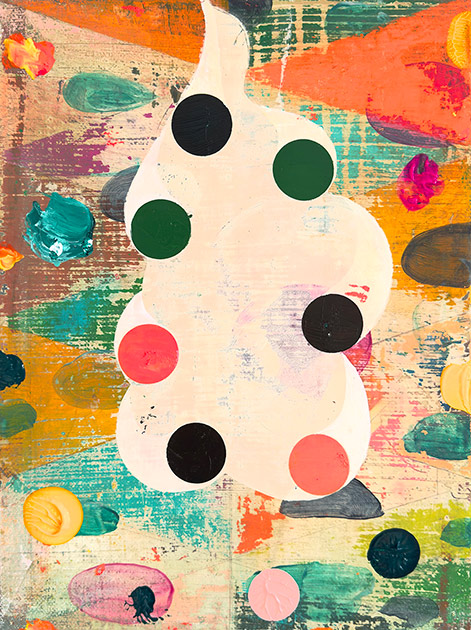
CBP: A recent painting ‘The Collector’ has a distinctive clustering of circles in one area of the canvas, a more unusual compositional outcome in your relation to the all-over rhythmic structure of other works. Can you talk about this painting?
JB: The dark circles in the painting originated from black puddles I used to use in my work. One day I became so frustrated with a painting I just painted a big black puddle in the middle of it, this puddle became a motif in my work that opened it up to a different direction. From then on I’ve used these clusters of dark shapes, in this case it gives a very definite end to the painting, an area that sits on a different spatial plane to the rest of the layers.
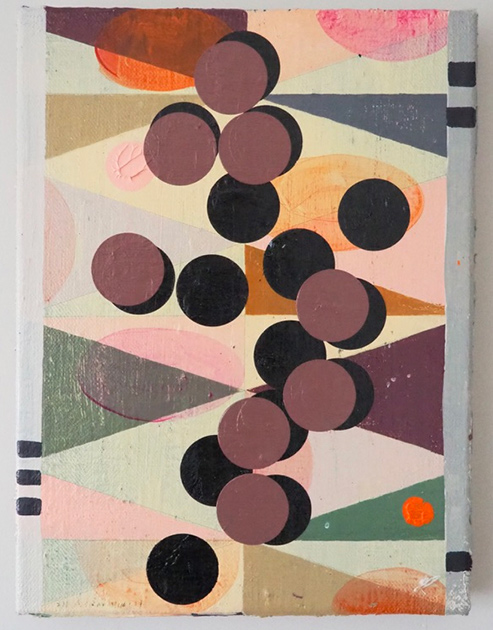
CBP: Can you discuss your use of acrylic paint in your practice. Is it the fast drying and ability to rework layers quickly, or is it a more general affinity with this medium, its film and the way colour is accentuated?
JB: When I began painting I found I was allergic to oil paint, so using acrylics came out of necessity in the first place. However the more you use a medium the more you learn about its capabilities, you learn how to build and destroy, while keeping the painting luminous. I find it an extremely tactile medium where you can layer images and build different atmospheres and surfaces on the paintings.
I definitely want the viewer to feel the enjoyment in the making process, it’s that childlike sensation of wonder in discovering and experiencing new things. Touch is a big part of this because in a sense painting is a tactile medium, I use brushes, rollers, printing techniques, my hands and collage. It’s all very handmade which I feel lends itself to the plasticity and layering nature of acrylic paint.
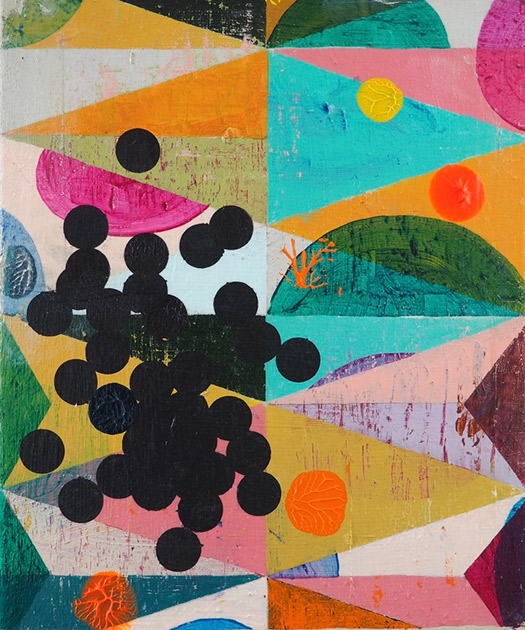
CBP: The history of your paintings and its layers are built up through transparency verses opacity and sometimes a sense of erasure, paint being removed. Can you discuss this aspect?
JB: I usually start my paintings by applying layers of highly pigmented transparent paint. From this point I often think about colour in terms of luminosity, creating a painting by turning the lights on and off in different areas, with areas of transparency and opacity.
The removal of paint happens as the surface begins to build, I’m fascinated by how colour is created from beneath the surface. It also opens up unexpected areas and embeds layers into the painting . I do this alongside printing areas and blobs onto the canvas which builds the surface while giving the painting a multilayered flatness.
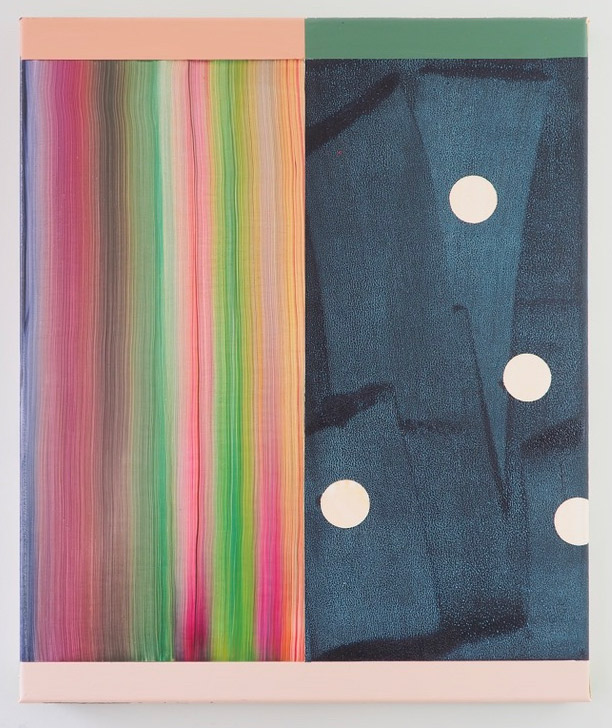
CBP: Gora / Zebra black is a recent work on paper. Can you talk about your works on paper, do they form preparatory studies for your canvas paintings, or are they independent, autonomous works?
JB: There is a surface quality and translucency that comes from working on paper that sometimes migrates onto the paintings, my Serso series would be an example. The fragility of the surface on paper means you have to pre plan everything, the geometry, the transparency of the paint and how far the paint travels on the brush. I find this way of working gives me relief from the intensity of the works on canvas.
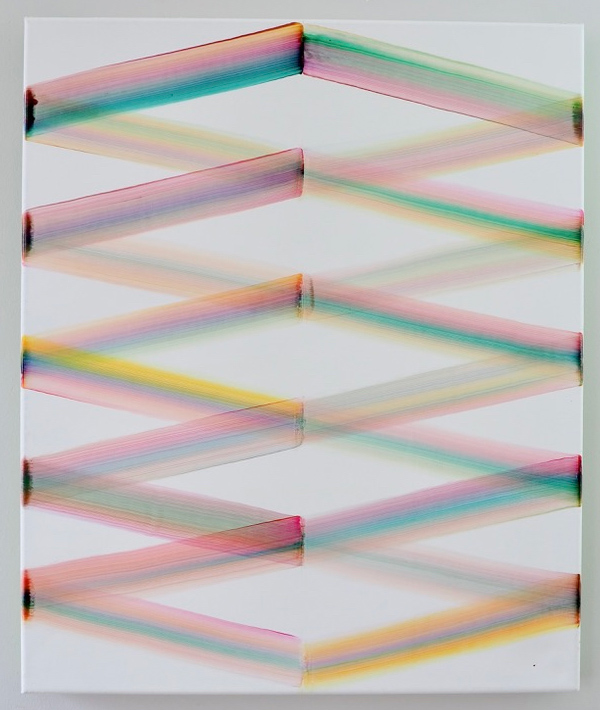
CBP: Do all your paintings find their own journey to reach the finishing line, or do some get abandoned or rejected?
JB: I used to throw plenty of paintings away, however the more experienced you become as a painter, the more devices you learn to rescue them. I like the journey, the best works are the ones you rescue from the point of abandon. Some of the canvases have countless paintings underneath but I feel this builds the surface, the intensity and the history of the work.
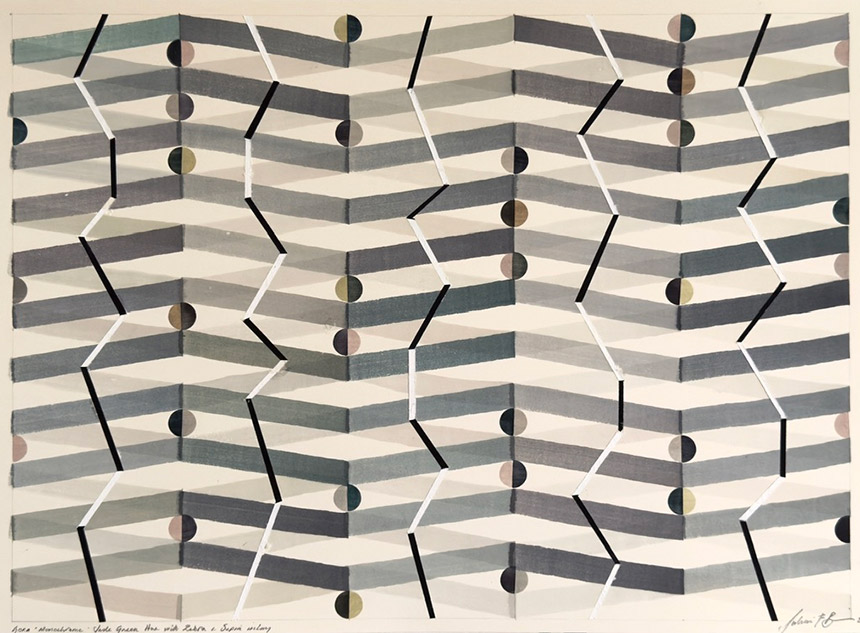
CBP: How do you title your paintings?
JB: I like to make paintings that have a sense of place, something that was in the subconscious during the process. Sometimes this comes before the painting has been made as an extension of something opened up in the previous work.
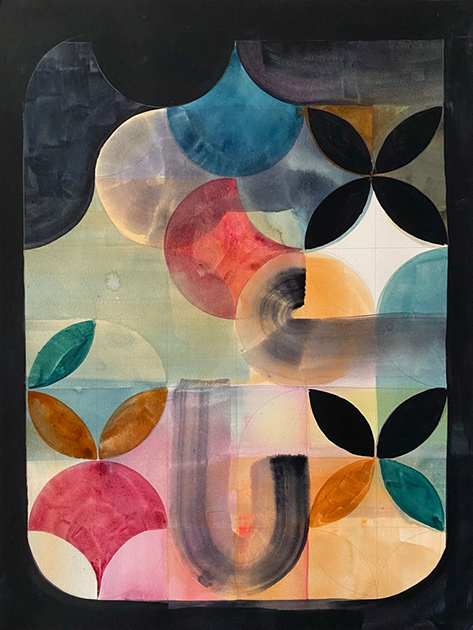
CBP: What are the inspirations for your paintings. Can you talk about influences that might not be immediately apparent in the work?
JB: I grew up in a very rural part of Dorset in the 80’s and in those days you had very little visual influences around other than the ones your parents gave you. My mother was also an artist, her collection of Polish ‘Wycinanki ’ cut outs were amongst the paintings and drawings she made which still retained a very strong Polish identity. My father was a graphic designer and had this massive Bauhaus book, these were very influential elements for me so I often think my work is a combination of these two forces, subconsciously I wonder if I’m still trying to please both of them in my work.
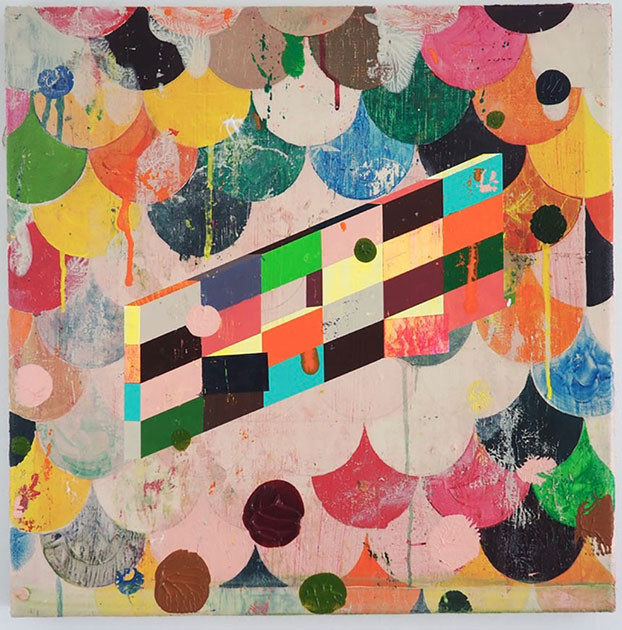
CBP: Describe a typical day in your studio.
JB: The short walk through the park to the studio clears my head from the busy mornings. When I arrive in the studio I tend to assess things for a while and then try and do something deliberate to the paintings if they are unresolved. I find this eradicates any preconceptions I had about the painting and reignites the dialogue between me and the work.
The rest of the day I’m quite focused, usually working in silence and on one painting at a time as I like the intensity this builds.
There are hard days but in general I just love making paintings, I’m not sure I could do without it. I’m inspired by colour everyday, the wonder and excitement it brings. There is something transformative, magical about when I put pigment on canvas, all my preconceptions disappear and I’m at one with the painting.
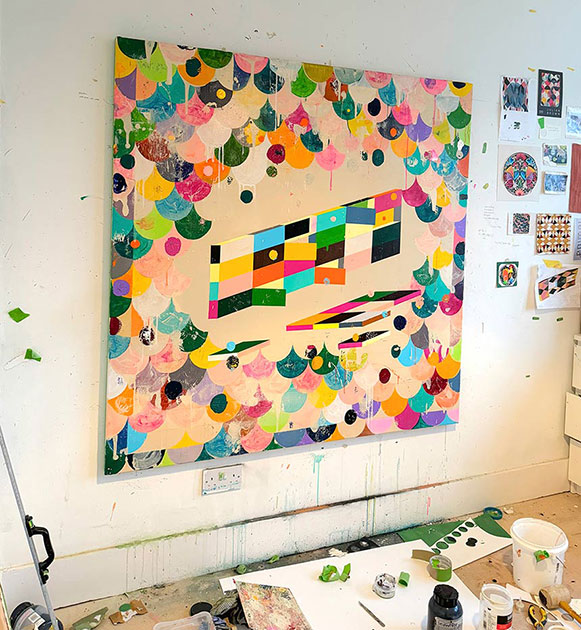
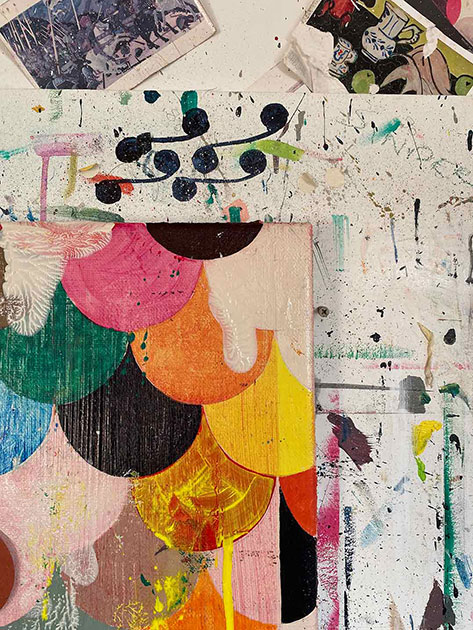
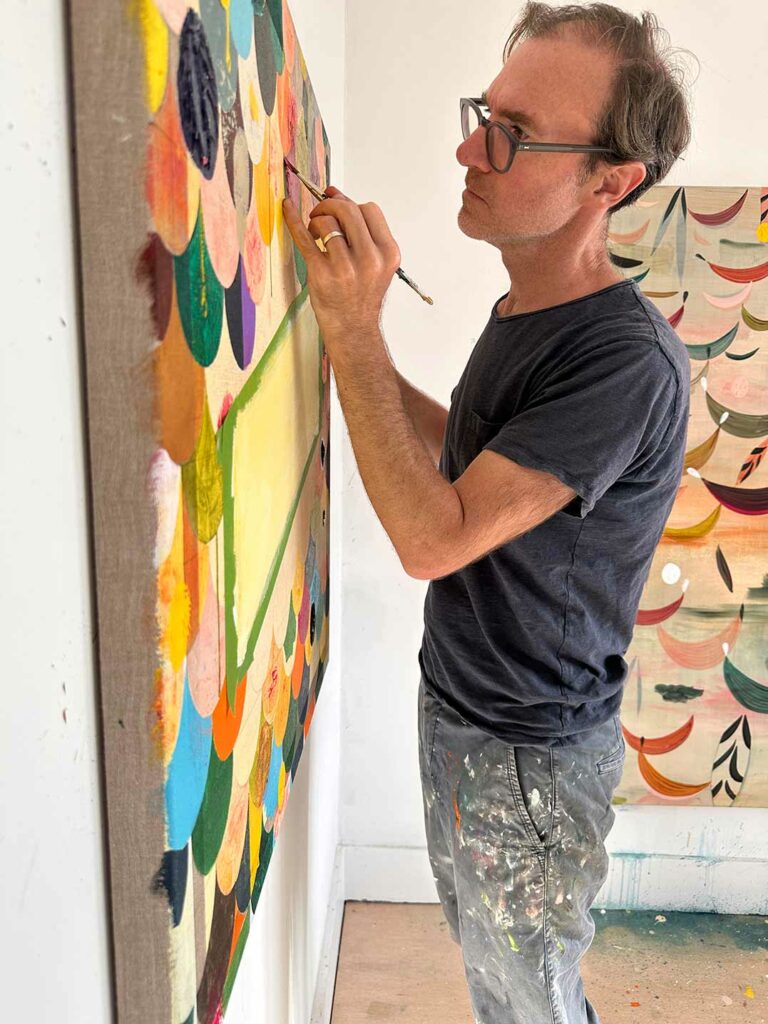
Julian Brown was born 1974 Oxford England, now works in London & Brighton. In 2016 he was selected for the John Moores Painting Prize, and in 2012 was shortlisted for the Marmite Prize. The paintings have been shown nationally and internationally with solo shows in both London and China, including the Royal Academy of Art London, Walker Gallery Liverpool, The Mackintosh Gallery Glasgow, Hastings Contemporary, Somerset House, Huddersfield Art Gallery, Xian Institute of Fine Arts China, Tianjin Academy of Fine China and National Museum of Gdansk Poland.
Solo exhibitions include: Future Galleons Brownsword Hepworth Gallery, London 2022, Future Islands, Yantai Art Museum, Shangdong Province China, 2017, Mono Fauna Julian Brown at Westminster Arts Reference Library 2017.
Recent group exhibitions include: ‘Abstractions’ Nuart gallery Santa Fe, New Mexico USA, 2023, ‘Fairground’ Glyndebourne Opera House, Lewes Sussex 2023, Linear Construction Smithson Project – Bristol 2023, Royal Academy Summer Show London 2023, Wish You Were Here – curated by Jo Hummel, Peer Gallery, Isle of White 2023, X – Newcastle Contemporary – England 2023.
https://www.julianbrownart.co.uk/
@julianbrownart
Image: Julian Brown in his studio, courtesy of Smithson Projects



